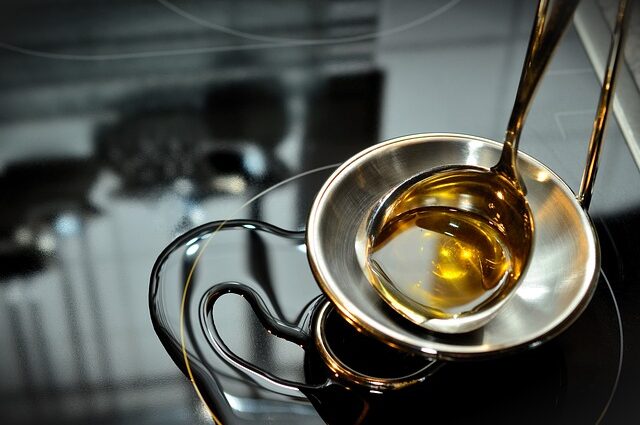In an era where mass production and profit maximization dominate the food industry, more and more people are asking: What am I actually eating? The answer is often unclear, hidden behind opaque ingredient lists and enticing marketing strategies. However, there’s a way out of this overload of information and uncertainty: self-sufficiency. And no, we’re not talking about a complete return to farm life, but rather small steps that each of us can implement at home. Pressing your own oil is one such example. So why not turn our backs on industrial processes and dive into the trustworthy world of home production? Especially for a food item we use so often?
Why Press Your Own Oil?
Nowadays, food is often industrially produced in large quantities and stored. This increasingly raises questions about the origin and quality of what we consume. There are recurring scandals where it turns out years later that foods didn’t contain what they were supposed to. However, when we press fresh oil at home, we spare ourselves all fears and worries about such problems.
First, it allows us full control over the ingredients. When you press your own oil, you know exactly which seeds or nuts are used. This is especially important if you value organic or regional products and want to trace exactly what lands on your plate—or in this case, in your bottle.
Another crucial advantage is freshness. Oils purchased in stores often have a long storage and distribution chain behind them. In contrast, freshly pressed oil can be enjoyed immediately after production. This freshness not only guarantees that the oil retains its maximum nutritional value but also ensures that no unwanted oxidative processes occur, impairing taste and quality.
Finally, taste is a key factor. Without preservatives, additives, and other industrial procedures, freshly pressed oil offers an intense, authentic taste that captures the true essence of the used seeds, fruits, or nuts. It’s a purist experience that invigorates the senses and brings out the oil’s true character.
If you’re more interested in foods and their ingredients, we recommend the YouTube channel @MARKETLEITER.
Step-by-step Guide:
- Select Raw Materials: You can use various nuts, fruits, and seeds, such as sunflower seeds, olives, sesame, walnuts, or almonds. Opt for organic quality and freshness. If possible, even consider using your home-grown produce.
- Preparation: Most seeds and nuts need to be roasted before pressing. Roasting intensifies the flavor and facilitates pressing. You can lightly roast the raw materials in a pan or oven.
- Choose an Oil Press: There are various home-use oil press models, from manual to hydraulic to electric presses. A manual press is sufficient for starters, but if you plan to produce oil regularly, investing in an electric press might be worth it.
- Press: Fill the oil press with your roasted seeds or nuts and start pressing according to the manufacturer’s instructions.
- Filter the Oil: After pressing, strain the oil through a fine sieve or coffee filter to remove any tiny particles.
- Storage: Store your oil in a sealed glass container in the refrigerator. Remember, freshly pressed oil has a shorter shelf life than industrially produced oil.
Tips and Tricks for Pressing Oil at Home
Entering the world of oil pressing might seem overwhelming at first glance. However, with some advice and tricks, getting started can be straightforward.
First, it’s advisable to be experimental. There’s a plethora of ingredients suitable for pressing. By trying out different raw materials, you can not only discover various flavors and textures but also pinpoint your personal favorite. Perhaps it’s the nutty notes of freshly pressed walnut oil that captivate you or the mild sharpness of rapeseed oil. Taste is subjective, and embarking on a culinary adventure is worthwhile.
A crucial note for those wanting to experiment with olive oil: This oil poses unique challenges. Special pressing methods are required to extract the golden elixir from the olives. It’s advisable to thoroughly research in advance and even consider specialized equipment to achieve optimal results.
Lastly, and this cannot be emphasized enough, cleanliness is paramount. It’s vital to ensure the purity of your equipment and workspace. Contaminations, whether from foreign substances, bacteria, or mold spores, can not only compromise the taste and quality of your oil but also pose health risks. Thorough cleaning and preparation can prevent such problems right from the start, ensuring a top-notch product.
